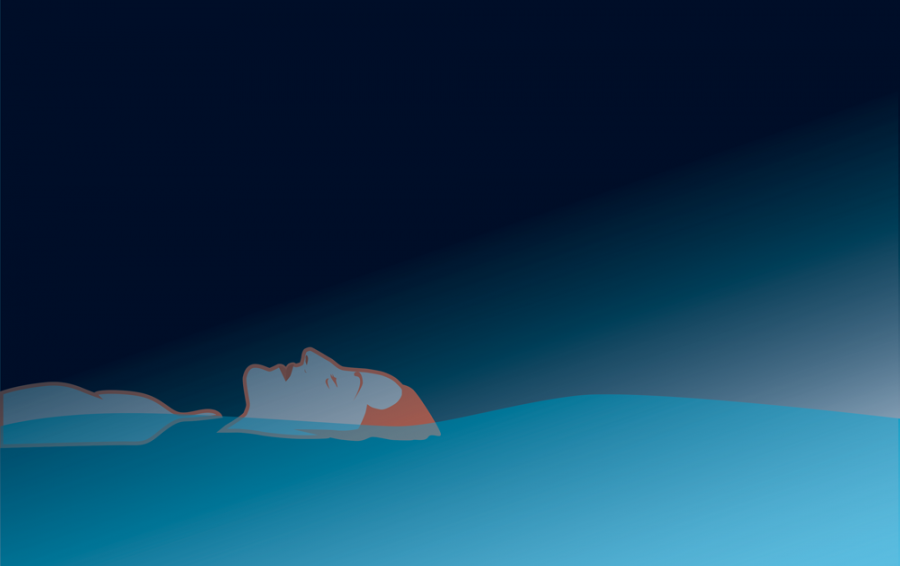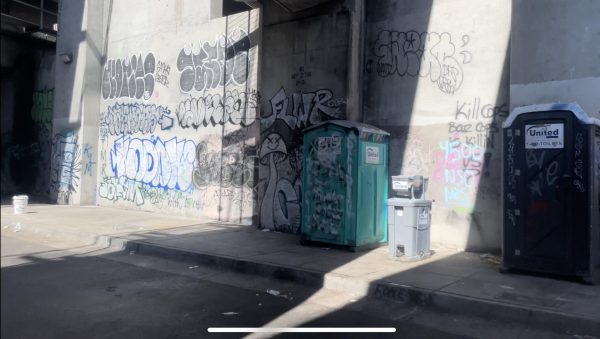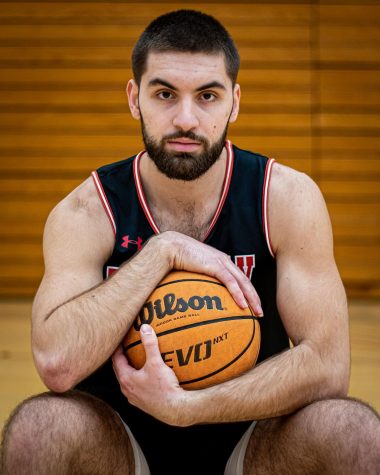Sensory deprivation what? Trying floatation tanks for the first time and loving the experience
April 27, 2016
As I walked through the doors of the loft where the sensory deprivation floatation tanks were, I began to question, “Wait, what am I doing here?” Initial feelings of apprehension surfaced around trying something completely new — and more importantly about spending extra money so close to rent being due.
But this was something that I had wanted to try for a while and eventually decided to go through with it; after all, this was something that was supposed to help me or at least allow me to enter some other state of consciousness.
I initially heard of floatation tanks through an article I read in The Atlantic called “Time Out: The Rise of Sensory Deprivation Tanks,” and the description of the experience hooked me from the start.
Originally known as the sensory deprivation tank, the process was developed by neurophysiologist Dr. John C. Lilly back in 1954 as a way to determine if the brain can maintain consciousness in an environment where there is no external stimulus. He found that once the body is freed from sensory stimuli, it can conserve about 90 percent of normal neuro-muscular activity.
In other words, your brain and body are given a breather from brain and muscle activity. There are more than 10 floatation tank centers in the Bay Area, mostly in San Francisco. So I figured that it was more than just some new age medicine fad.
My initial feelings of nervousness and built up excitement were compounded by the fact that the location seemed to be in the middle of nowhere, around ten blocks away from the Fruitvale Bart station in Oakland. The building was an old brick building next to railroad tracks with a big banner on top that read “Lofts for rent.”
As I walked through the door I saw a woman sipping tea, sitting on a couch, with her hair wet. When I met her eyes, she looked through me as if she was in her own world — and in that moment I knew there was an experience to be had here.
I quickly learned it was her first experience, so I asked her to describe it — wanting to hear firsthand what she’d felt:
“Trippy,” was her response.
The owner of the establishment came rushing out to ask why I was half an hour early. I explained to her that I took BART and I was only trying to give myself extra time since I didn’t know the area, before she offered me water and went back to her duties. The woman I had talked to left, so I sat observing messages on the walls like “Breathe, it all ends well,” which made me laugh since it brought back moments that I’ve told myself this in a moment of panic.
It’s my turn. I’m given a quick tour of the floatation tanks. The owner, Ann, seemed to be running through the information as if it was the hundredth time she’d covered it that day, but slowed down to explain how I can get the best out of the experience. Most people, she explains, tend to feel trapped and freak out at the thought of the hour that lies ahead. So instead she tells me, to focus on things that you look forward to in the week. She led me to the second floor of the loft and showed me to their shower, where I cleaned off before my 90 minutes in the sensory deprivation tank.
I was the last customer of the day, so the place was really quiet; only the sound of the air-conditioning and the tank filter system could be heard. As I entered the tank and laid down, I felt every little single cut on my skin because of the Epsom salt, but this dissipated in what felt like five minutes. I couldn’t tell how much time had lapsed specifically, but around what felt like the first 20 minutes of the float were the most overwhelming.
Every thought and every worry came rushing at me. I was left with nothing more than my thoughts. I tried to think relaxing thoughts, but failed miserably and instead began focusing on my fatigue from working earlier in the day. The tank was humid and pitch black; this created a feeling of being weightless.
After what seemed like the first twenty minutes, I couldn’t feel my feet or hands. And then I fell asleep, woken up to the sound of knocking coming from outside the chamber. An hour had passed. After my immersion, the sofa downstairs where I had seen the woman earlier was my final resting spot. There was tea waiting for me along with some snacks, and Ann was ready to discuss my experience.
“What do you think?” Ann asks.
Inside, I thought my body felt so relaxed, my mind spaced out, yet fully introspective at the same time. I simply reply, “Real good.”
As I gathered my thoughts, I truly began to take in what just happened. In that moment I was fully relaxed and could care less of the worries that laid waiting in the following days. But truthfully, I’m not going to sit here and say that I left the float a changed man. However, the positive messages posted across the wall that made me chuckle actually meant something, and this was one of those instances where my take-away is indescribable.
As I’m about to leave the center, Ann offered me a ride back to the BART station. As it turns out the Fruitvale station is on her route home. I’m then given some additional guidance on our ride, “The feeling you are experiencing will probably last a few days or a week. You’re gonna feel more creative.”
This was interesting to me — could this be something that people frequently utilize? And what kind of person would regularly visit flotation tanks? Curious, I asked Ann about “any frequent visitors.” She replies that most people that go there are dealing with either emotional or physical healing.
She dropped me off at BART, right as the train pulled up, and with a final goodbye I assured her that I’d be back. I rushed inside the train and sat there, backtracking to earlier times. Not thinking of much or even caring of my earlier worries, just enjoying the moment.
















